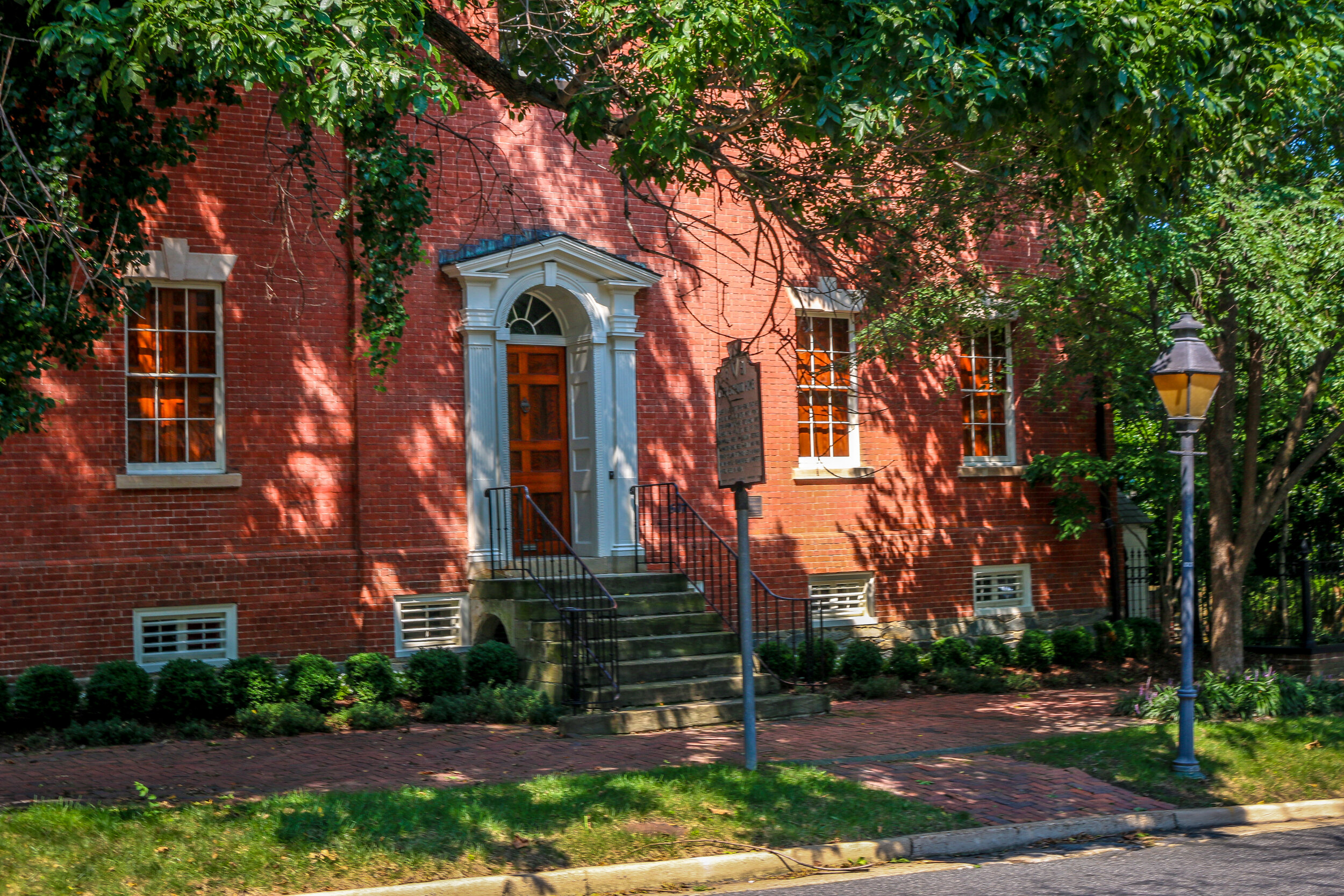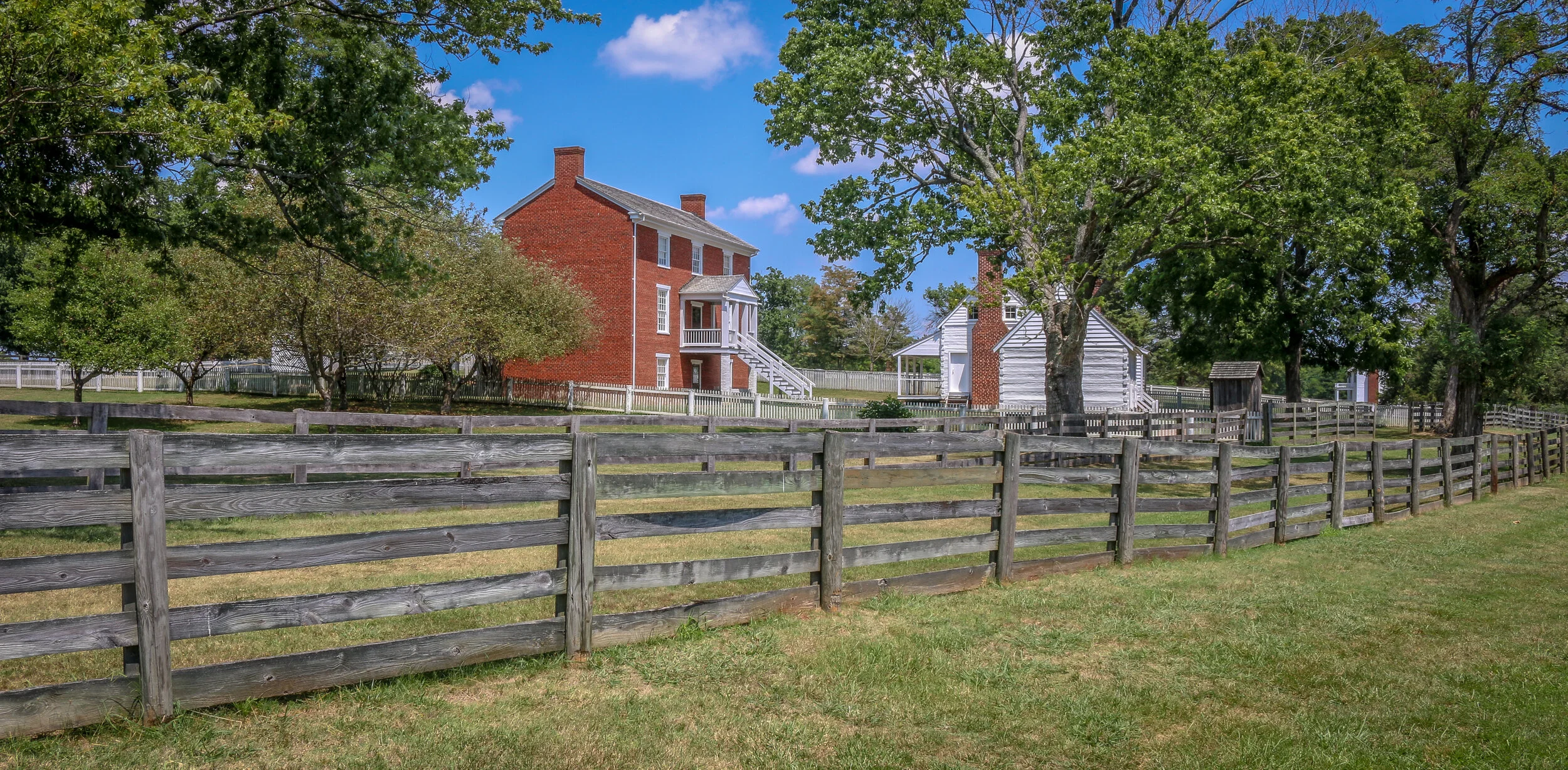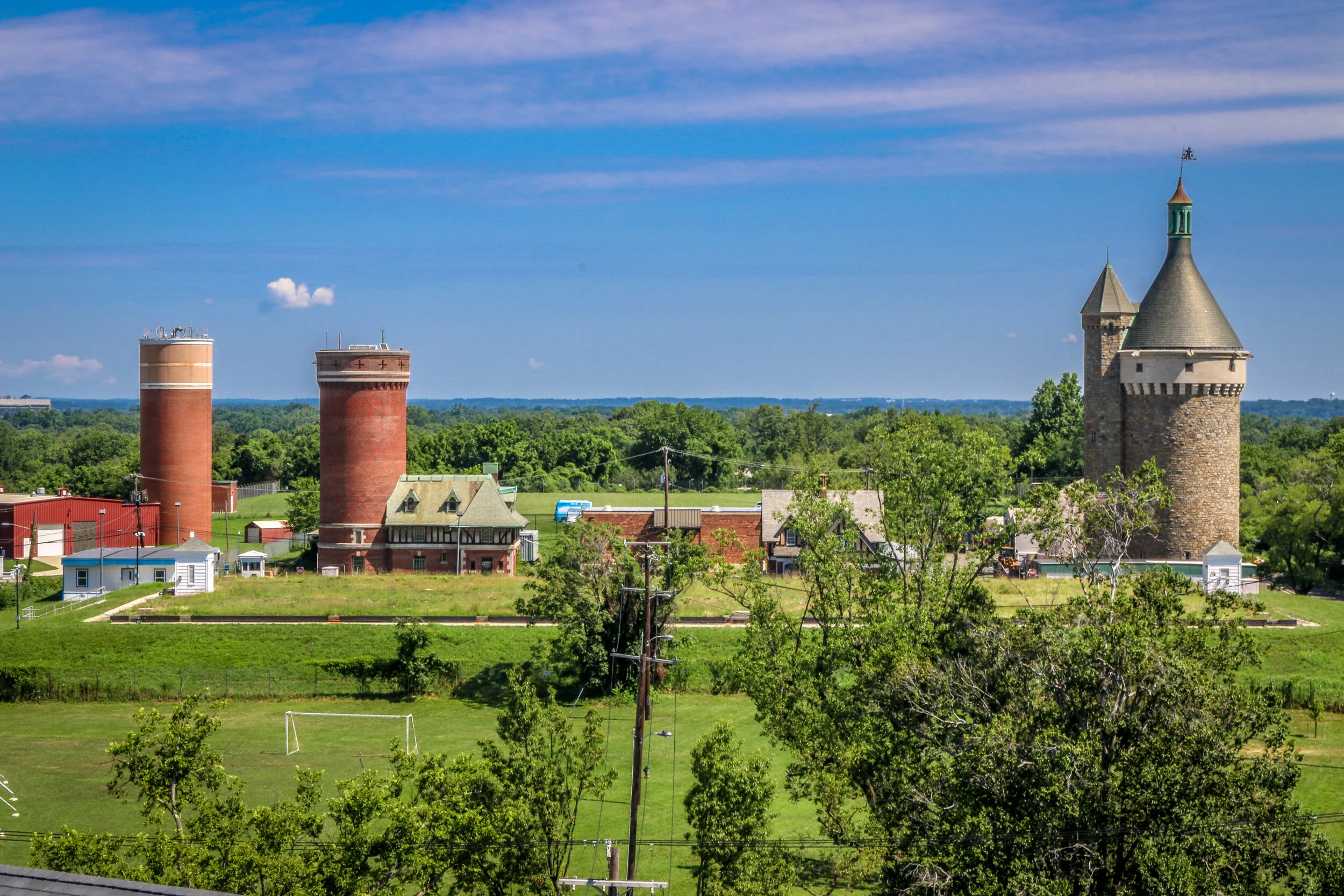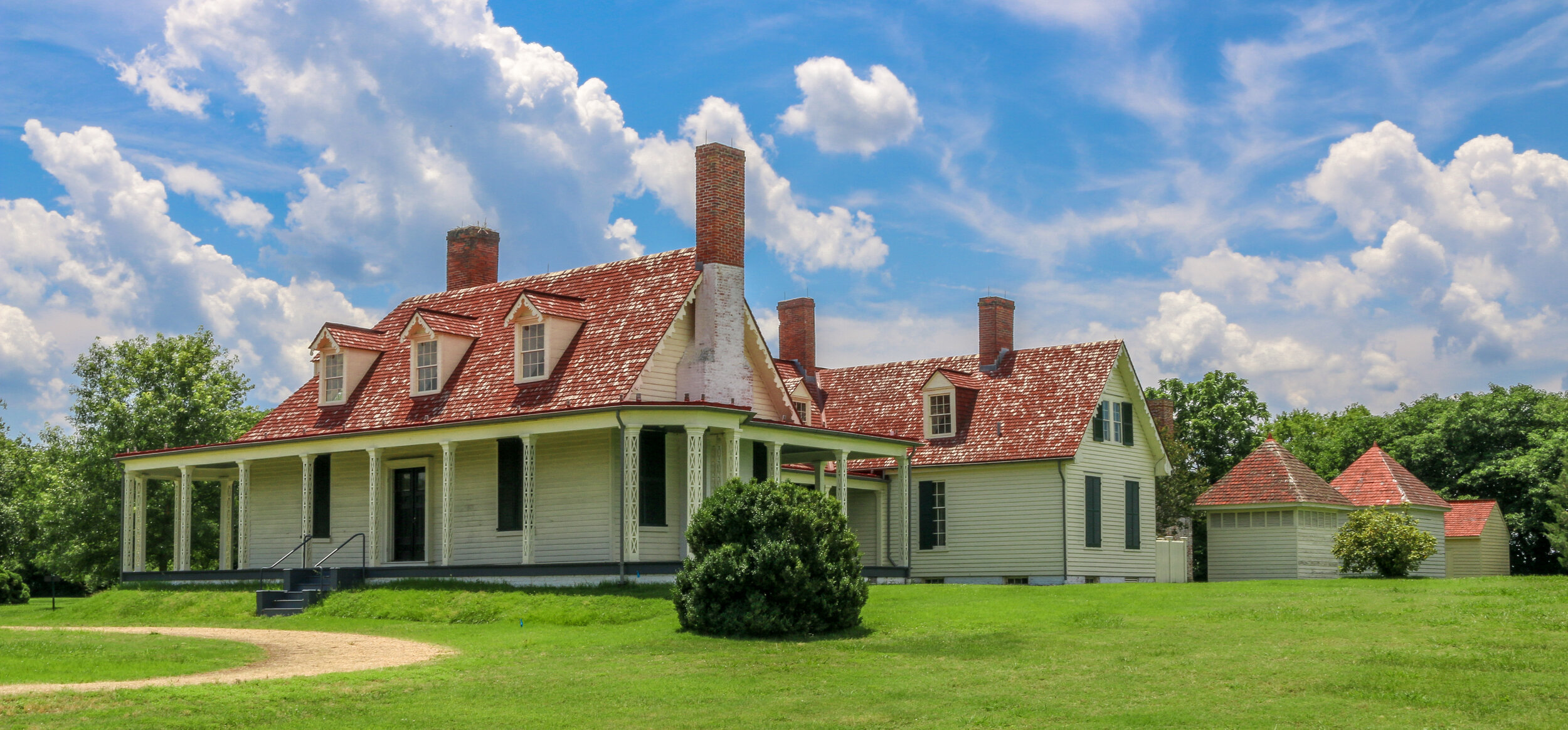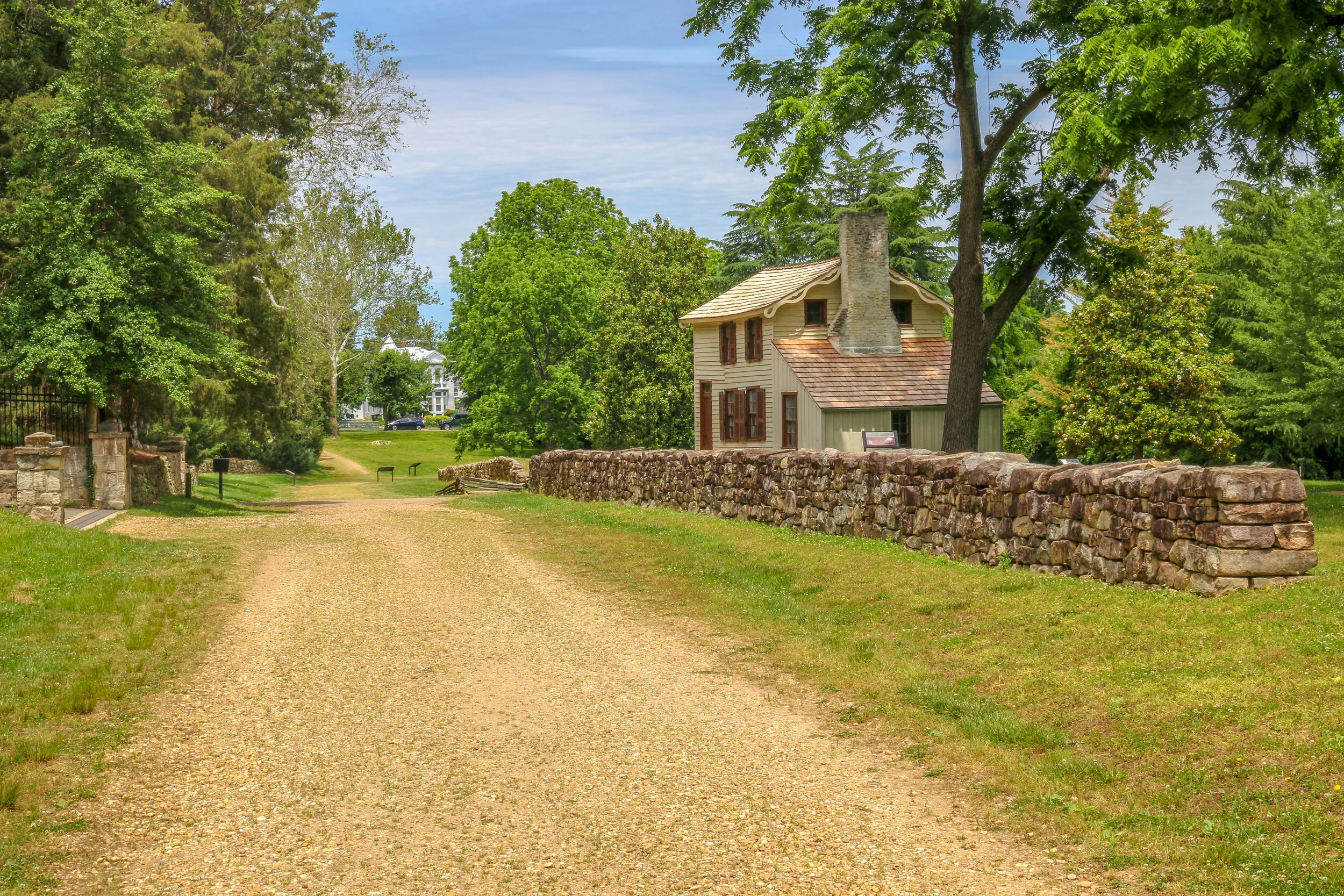Hello Everyone. Christmas week is upon us! It snuck up on me pretty quickly this year, but I’m very grateful to have been able to spend the holiday season with friends and family at home. It’s always nice to be home in Washington this time of year as I truly think it’s the best time of the year to be in our nation’s capital. I’m writing to you this week from my brother’s house here in New Hampshire where I’ve only just arrived this evening. I figured it would be good to spend a few days in New England before heading off to old England for the New Year.
It’s been a fun and festive week here and I hope you are all enjoying the season however and wherever you celebrate it. We’ve certainly been busy and I’d love to tell you what we’ve gotten into this week. Last Tuesday my folks and I took a wonderful candlelit tour of the Tudor House, one of Washington’s oldest homes, the oldest parts of which date back to the late 18th century. We drank cocoa, ate mince pies and pound cake and heard the story of the family which called Tudor House home for 6 generations. Many of the furnishings are original to the house and the whole house was decorated for Christmas which was really special. After our tour we had a great dinner at Farmers, Fishers and Bakers on the Georgetown Waterfront while watching ice skaters cruise around the rink.
Wednesday we got up early and headed up to Columbia, Maryland to check out an afternoon matinee at Toby’s Dinner Theatre. We started with a really delicious buffet brunch and then enjoyed a fabulous production of the Christmas classic It’s a Wonderful Life performed in the round. The actors were great and the adaptation was incredibly well done. This was definitely a highlight of the season and I will absolutely be returning to Toby’s in the future. After the show we took a spin around Historic Ellicott City, a town I’ve really enjoyed visiting over the last couple of years. The town was decorated for the season and it was fun to wind around the hills and rivers for an hour or so. We wound up the day with a few craft beers at the nearby Sapwood Cellars Brewery.
On Thursday I spent the day cleaning and packing and then headed over to my friend Sandy’s house for dinner. Sandy was my date to my senior prom and has become one of my very good friends over the last thirty years.
The Potts-Fitzhugh house at 601-607 Oronoco Street in Alexandria is one of the most interesting houses still standing in the area. Known most famously as the Boyhood Home of Robert E. Lee, the house’s history goes much deeper. The house was built in 1795 in what was then the Alexandria section of Washington D.C. for John Potts. Potts was the secretary of the Potomac Canal Company, which was attempting to link the Potomac and Ohio Rivers with a canal around Great Falls. Potts was an old friend of George Washington who visited the house often and sometimes even spent the night during the year Potts resided in the house.
Potts lived in the Oronoco Street house for only about a year, and then sold it to William Fitzhugh, a wealthy Virginia tobacco planter and racehorse breeder who was looking for a city home. Fitshugh owned beautiful Chatham Manor in Fredericksburg which was right down the road from Ferry Farm, the boyhood home of George Washington. The two had served together in the Virginia House of Burgesses before the Revolution, and remained friends. In fact, Washington dined with Fitzhugh at this house on Oronoco Street just one month before he died, on his last visit to Alexandria. Fitzhugh was married to Ann Randolph and the couple had three children. One of their children, Mary Lee Fitzhugh, would grow up to marry George Washington Parke Custis, a grandchild of Martha Washington from her first marriage. The wedding took place in the parlor on Oronoco Street. George and Mary Lee had one daughter, Mary Anne Randolph Custis, who would grow up to marry Robert E. Lee in 1831, two years after he graduated from West Point. During the Civil War, the Lees would take refuge on the Fitzhughs’ country estate, Ravensworth, which they built after selling Chatham. When William Fitzhugh died in 1809, his city home on Oronoco Street passed to his son, also named William, who would rent it to the house’s most famous occupants: Henry “Light Horse Harry” Lee and his family which included then five-year-old Robert E. Lee.
Robert E. Lee was born in Stratford, Virginia in 1807, but he moved with his family to Washington D.C. in 1810, when he was just 3 years old, and lived at 611 Cameron Street in the Alexandria section. In 1812, they moved to this house on Oronoco Street where they lived for the next four years. The Lees would move to 407 N. Washington St. in 1816 but returned to the house on Oronoco Street in 1820. On October 14th, 1824, the Marquis de Lafayette was in Washington and wanted to visit his old Revolutionary War friend “Light Horse Harry” Lee’s widow and children,so he stopped by their home on Oronoco Street. Lafayette met 17 year-old Robert and no doubt told him of his father’s heroism in the Revolution. Robert lived on Oronoco St. until he departed for West Point in 1825 on the recommendation of William Fitzhugh the younger. When Robert left, his mother and two sisters moved across the river to Georgetown, but the house on Oronoco Street would be inhabited by other members of the Lee family for the next 62 years until it was sold to the Burson family in 1887. During the Lee family’s tenure there, Alexandria was retroceded to Virginia. One can only speculate on the fate of Robert E. Lee and the nation had his boyhood home remained a part of Washington D.C…
As many of you remember, we spent much of the spring and early summer tracing the battles of the Eastern Theater of the Civil War from Manassas to Appomattox. As we got to the end of the war though, we came to realize that there was one more casualty we needed to consider and one more route to follow to gain some closure to our tour. That was the trail taken by John Wilkes Booth after he assassinated Abraham Lincoln on April 14th, 1865 at Ford’s Theater. Booth and his accomplice David Herold led the authorities on a nearly two week manhunt which ended on April 26th when Booth was cornered and killed on the Garrett Farm in Virginia. This route is now one of Maryland’s scenic byways and one of the country’s more historic ones.
Our day began at historic Ford’s Theater. Ford’s Theater is a wonderful place managed by the National Park Service and just blocks from the White House which still functions as an active theater. My folks and I try and get there every December to watch their wonderful rendition of A Christmas Carol. The box where President Lincoln was shot is preserved and well cared for and there is a small museum in the basement dedicated to the assassination. After Lincoln was shot, he was taken across the street to The Peterson House, where he would die of his injury soon thereafter. The Peterson House is also managed by the National Park Service and is open for tours.
Booth, on the other hand, leapt to the stage, catching his boot spur and breaking his leg in the process, but still managed to escape out the back door of the theater. There he mounted his horse and sped off into the night, crossing the Potomac on the Navy Yard Bridge and then rendezvousing with his accomplice David Herold. The two quickly made their way to the tavern of Mary Surratt in Surrattsville near Clinton where they retrieved rifles, field glasses and other supplies they had stashed there…
The photos below come from a recent visit to Appomattox Court House National Historical Park near the town of Lynchburg, Virginia. It was the site of the surrender of the Army of Northern Virginia which effectively ended the American Civil War.
After the siege of Petersburg and the fall of the Confederate Capital at Richmond, General Robert E. Lee led his Army of Northern Virginia west with the hopes of turning south to North Carolina and joining with General Joseph Johnson’s army there. They moved towards the train depot at Appomattox Station hoping to find much needed supplies waiting for them there. Union General Phillip Sheridan and his cavalry arrived first, capturing the supply trains and forcing Lee to turn his thoughts towards Lynchburg instead. Surrounded by Union troops, they made one final push at dawn on April 9th, 1865. It didn’t take long to realize that they were surrounded and Lee called for a meeting with Ulysses S. Grant to discuss the terms of surrender.
The site chosen for this conversation was the home of Wilmer McLean in the tiny village of Appomattox Court House. The generals met in the parlor, recreated above, to hammer out the details. The terms offered were very generous as the Confederate soldiers were to be immediately paroled and even allowed to keep their horses and sidearms. Their parole papers were printed in the nearby Clover Hill Tavern. The Southerners marched into town, stacked their rifles, turned over their cannons and marched out. While the surrender of Lee’s Army of Northern Virginia was not the end of the Civil War, there was little chance or hope for the Southern cause in its aftermath. The war would technically drag on until early summer, with skirmishes across the south, but the surrender at Appomattox Courthouse was the beginning of the end. Four long years of fighting which cost over 600,000 lives was finally nearing its conclusion…
Hello everyone and welcome to another weekly installment of my stay-at-home journal from Washington DC. Another week into Pandemic 2020 and I’m actually feeling pretty good this week. As I mentioned last week, I’ve begun looking at a longer term plan to get through the pandemic. It’s not what I wanted to be doing this year, but my life is only half-lived and I want the second half to be just as good as the first half. In order for that to happen, I need to keep myself and my people healthy and safe. Since I’ve come this far without getting sick, I’m going to just keep doing what I’ve been doing until one of four things happens – we find an effective treatment against the virus, we find a vaccine, we find a cure or the numbers actually drop to the minimal levels much of the rest of the developed world is looking at. Until one of those four things happens, I’m staying right where I am and I’m going to just keep on keeping on. It really bothers me that so many Americans are disparaging Dr. Fauci and the Center for Disease Control because neither is telling them what they want to hear. Dr. Fauci is one of the top infectious disease experts in the world and the CDC is a public health organization charged with keeping us safe and educated about infectious diseases. The CDC is staffed with highly educated experts in the field and Dr. Fauci is one of the foremost experts in the field and has served for many years under both parties. Why people are now choosing to listen to people who are not experts and distrusting those who are is painfully ignorant and really upsetting. If a doctor tells you you have cancer, you can keep looking until you find someone, perhaps a fortune-teller, who tells you it’s just indigestion, but that’s not going to change the facts. And our numbers continue to rise, and someone always comes along to discredit those numbers. I’m just throwing my hands in the air about this at this point. I’m really sorry that so many of my fellow Americans are dying and will continue to die when they don’t have to. With a plan and some national leadership we could get this whole thing under control.
One of the things I’ve been thinking about this week is an experience I’ve had more than once in Los Angeles. I’ve spent a lot of time in L.A. and especially in recent years they have experienced serious and severe droughts. And yet despite all the warnings and news stories, if you drive around you will still see people watering their lawns and washing their cars. In the middle of a drought. It occurred to me that the only way a drought will mean something to these people is if they go to turn on their faucet and nothing comes out. If they turn it on and water comes out then they must not be in a drought. When I see people washing their car in a drought, it makes me feel about how it makes me feel right now when people are crowding into bars and restaurants. Until you or someone you know gets sick and/or dies, apparently this won’t be real for you. I’ve had three close friends get sick with this disease, and a lot of people with an extra degree of separation (uncles of friends, parents of friends) who have died. Maybe that’s why I’m being cautious, but if everyone would come at this with the same sense of urgency, we, as a nation, would be doing better right now. As it is, we’re the laughing stock of the world, which I guess people are okay with. I hear people talk all the time about how we’re the “best country that’s ever existed on the face of the Earth” but we sure are proving otherwise. Remember when America was a leader and not just a bully with the biggest arsenal? We sure are Number 1 right now, but not in the way I would have hoped.
In big local news this week, my hometown Washington Redskins have officially dropped their name and logo and are hopefully going to announce a new one soon. I’ve seen many of the different suggestions and there are a few I would really love to see happen, Red Tails and Red Wolves being my two favorites.
Hollywood Cemetery is a beautiful, sprawling old cemetery overlooking the James River just west of downtown Richmond. Established in 1849, Hollywood Cemetery is the final resting place of two U.S. Presidents, James Monroe and John Tyler, and Jefferson Davis, the only President of the Confederacy. Also buried at Hollywood are 28 Confederate Generals including JEB Stuart and George Pickett as well as a considerable number of Confederate soldiers, both known and unknown. The Monument of Confederate War Dead is found there as well in the form of a 90 foot pyramid dedicated in 1869.
We enjoyed our visit to Hollywood Cemetery and spent several hours there. It has quite a history and some beautiful examples of funerary art. The President’s Circle includes the two presidents mentioned above and local celebrity burials as well. The south side of the cemetery offers beautiful views of the James River and Downtown Richmond. We used the Girl Scout Self-Guided Tour Pamphlet (found HERE) to help us find our way around. It can be tricky, but it’s not big enough to get really lost. I hope you enjoy these photos from Hollywood Cemetery.
I took these photos last week in the midst of the Confederate statue removal process in the old Confederate Capital of Richmond. It was a unique time to visit because some of the statues had already been removed, one of JEB Stuart was in the process of being removed and the two central ones to Robert E. Lee and Jefferson Davis still stood, although both have been slated for removal.
In taking these photos I wanted to capture the spirit of the protests which ultimately have led to the conversation over the removal of these statues, so I have included some close-up shots of the graffiti. Some of the graffiti is targeted towards police brutality while some supports the Black Lives Matter movement.
I am of the opinion that these statues cannot continue to stand in these central places in our nation’s cities. While there are aspects of all of these men which I admire and respect, the cause for which they fought was ultimately the continuation of slavery in perpetuity. There are places for these statues as I believe all art tells a story, but the story currently being told isn’t a complete one and needs to be adjusted with our current understanding of history. These statues coming down isn’t erasing history, it is history.
The photos below come from a recent visit to the battlefields of the greater Richmond/Petersburg Area. With the exception of the first few from Gaines Mill which was important to the Peninsula Campaign of 1862, most of these battles were part of the 1864 Overland Campaign. This long, brutal and bloody series of battles would eventually lead to the capture of Petersburg and the fall of Richmond which set the stage for the surrender of the Army of the Potomac at Appomattox. Civil War Chronicles will trace the major battles of the Eastern Theater of the war through photos and brief histories
Richmond was not the original capital of the Confederacy, but became the capital after Virginia seceded from the Union in April of 1861. Richmond and neighboring Petersburg were major industrial hubs with rail lines connecting to points near and far and the James River to further move supplies in and out of the area. The rivers surrounding the city made defending it somewhat easier as well. Because of the strategic importance of Richmond, it would be the focus of several major campaigns during the war.
Our visit started at Gaines Mill Farm which saw some of the worst fighting of the Seven Days Battle during the Peninsula Campaign of 1862. This battle was the first in which Robert E. Lee had command of the Army of Northern Virginia following the wounding of Joseph Johnston. Lee’s ability to hold off George McClellan and his Union forces would direct the war away from Richmond and back to Northern Virginia to Fredericksburg and Chancellorsville which we visited several weeks ago…
The photos below come from a recent visit to Fredericksburg and Spotsylvania National Battlefield Park, which also includes the Battles of Chancelorsville and The Wilderness. Civil War Chronicles will trace the major battles of the Eastern Theater through photos and brief histories.
It had been almost a year since the horrific battle of Gettysburg, and in the interim President Lincoln had turned command of the Union Army over to General Ulysses S. Grant. Grant would lay out a plan to attack the confederacy on many fronts including Sherman’s march towards Atlanta and an attack on Mobile, and Grant himself would ride with General George Meade’s Army of the Potomac. Their goal was to bring the war back to Virginia and keep the pressure on General Lee and his Army of Northern Virginia. This Overland Campaign would be a war of attrition and would bring the war to new levels of horror but ultimately lead to Lee’s surrender at Appomattox.
On May 4th, 1864 the Army of the Potomac crossed the Rapidan River and engaged Lee’s army in an area called The Wilderness. Apparently the area today bears little resemblance to what it did at the time when new growth underbrush made movement difficult, artillery less effective and confusion the norm. Fierce fighting took place on the scattered farms in the area which allowed for some open space in which to maneuver, but most of the battle took place in the dense forest. On May 6th, the Union Army had taken the upper hand and Lee’s men were in grave danger of being overrun on the widow Tapp’s farm. In a scene from the movies, Longstreet’s reinforcements arrived at just the right moment and Lee was prepared to lead them into battle himself, but the Confederates wouldn’t allow it and moved him quickly to the rear. After two days of heavy fighting neither side had gained a decisive victory. Unlike his predecessors, Grant didn’t pull back but rather pushed forward, ordering a night march towards the town of Spotsylvania Court House. His plan was to get between Lee and the Confederate Capital at Richmond. Sensing this move, Lee ordered his men to move that night as well.
Hello Everyone,
Another week has come and gone here in Washington D.C. Time has taken on a different quality for me here. I’m very used variety in my life, so when I get a chance to stop and catch my breath, it’s actually kind of nice. Now I’m through the “catching my breath” phase and into a routine phase which I know is how most people’s lives simply are. It has its ups and downs, but more than anything the time just seems to slip away. I hope every week to at least have something to show for that week, but even if there isn’t anything tangible it’s another week of keeping myself safe and sane and another week of helping who I can do the same. Sometimes it’s the little things that can make a difference too. This week I saw my first lightning bugs of the summer and it reminded me of how magical these little critters are. How cool is it that they can just glow like that in the dark? When I used to guide night snorkel tours in the islands, I used to try and show people some phosphorescence in the water, but lightning bugs are way cooler than that. They fly and they glow. In my next life, it wouldn’t be a bad choice. On a completely unrelated note, my mother set a new personal record for rabbits seen on her morning walk this week with 16. Like I said, sometimes it’s the little things.
My week started with a relaxing Thursday. I’m sure I did things, but I can’t remember what they were. There are more of those kinds of days recently too. I did have a nice Zoom chat with some of my friends from college and it felt really good to laugh for a while. Friday was exciting because we tapped our recently brewed homebrew and I have to say it was pretty tasty. We sampled it alongside other beers of the same kind (Kolsch), and ours held up okay. We also brewed a fresh batch on Friday as well, an American Cream Ale this time, so we’ll see how that works out in a couple of weeks. It’s been bubbling away in the fermenter, so that’s a good sign. After all of the beer excitement, we enjoyed some nice weather outside on the patio with some snacks and an exciting game of Skip-Bo, one of our go-to pandemic card games. It wasn’t a bad Friday at all.
Saturday I met up with a friend for a nice walk down in Rock Creek Park, a wonderful National Park unit which splits the city down the middle along the natural valley formed by the creek. It was a beautiful day for a walk, and hence was a little more crowded than I would have liked, but we did okay. My friend brought her dog along and he seemed to enjoy the exercise as well. We sat for a while by the water and chatted away the morning and for a minute, it almost felt like normalcy.
After being turned back south after the Battle of Antietam, Confederate General Robert E. Lee marched his army back to Virginia. Union General George McClellan was replaced by General Ambrose Burnside to command the Army of the Potomac, and President Lincoln urged Burnside to pursue the Army of Northern Virginia deep into the state and attack the Confederate Capital at Richmond. The major obstacle lying in their way was the Rappahannock River.
Burnside arrived at Stafford Heights overlooking the river and the small town of Fredericksburg in mid-November, 1862. He had sent orders to have pontoons at the ready to provide a means of bringing his army rapidly across the river. Tragically for Burnside and his men, the pontoons didn’t arrive for several weeks. Instead of crossing the river in boats or rafts, he chose to wait for the pontoons. By the time they got there, Confederate troops had dug in on the high ground south of the city called Marye’s Heights and behind a stone wall along a sunken road to the front of this position.
Union engineers worked through the night of December 10th to assemble the pontoon bridge, but their progress was slowed by Mississippi sharpshooters in town. A small group of Union soldiers crossed the river in boats and fought a battle to secure the streets of the town. They finally secured the town in late afternoon on the 11th, but it was winter and the daylight soon gave out. The bridge would be completed and most of the army would cross it on December 12th.
Hello everyone! 10 weeks later and I’m still here in Washington and with no end in sight I’m trying to make the most of it. It’s been another tough week across the country, and here in our Nation’s Capital, and I don’t want to downplay the significance of what’s going on so that’s where I’ll start this week. The murder of George Floyd in Minneapolis saddens me greatly. If you are a regular listener of my podcast, you know that I don’t shy away from talking about racism in America and some of the horrible incidents which have occurred in our country’s history. Racism and violence towards minorities is not something which ended with the Civil War or the Civil Rights Act and it’s something which is an everyday reality for many of our fellow Americans. I try and keep politics and controversy to a minimum in this space, but there should be no controversy in this. A man was killed for no good reason and when that happens the person who did the killing needs to face the harshest of consequences. In this case, all the good cops should be leading the charge as what happened was a disgrace to the badges they wear.
Beyond that, I don’t know the answers. I wish I did. It’s been hard to watch the vandalism going on in my city and in my neighborhood. I wish that it hadn’t come to that, but I’ve been watching backlash for years over peaceful protests and sadly this seems to be what it takes to peoples’ attention. I’m trying to keep my ears open right now and really listen to what my black friends are saying. Their reality is different from mine and I acknowledge that and I am listening. I think the thing which affected me most was a tweet by Seth Green which said “Black people are literally saying ‘stop killing us’ and there are people saying ‘but…”. A change has got to come. What’s past is past, but there is still hope for the future.
With all of this weighing heavily on my mind, I’ve been trying to stay productive this week. I’ve been getting some photos edited and published and some writing done as well. I’m also making some headway on one of the books I’m writing, although it will undoubtedly take longer than I anticipated.



